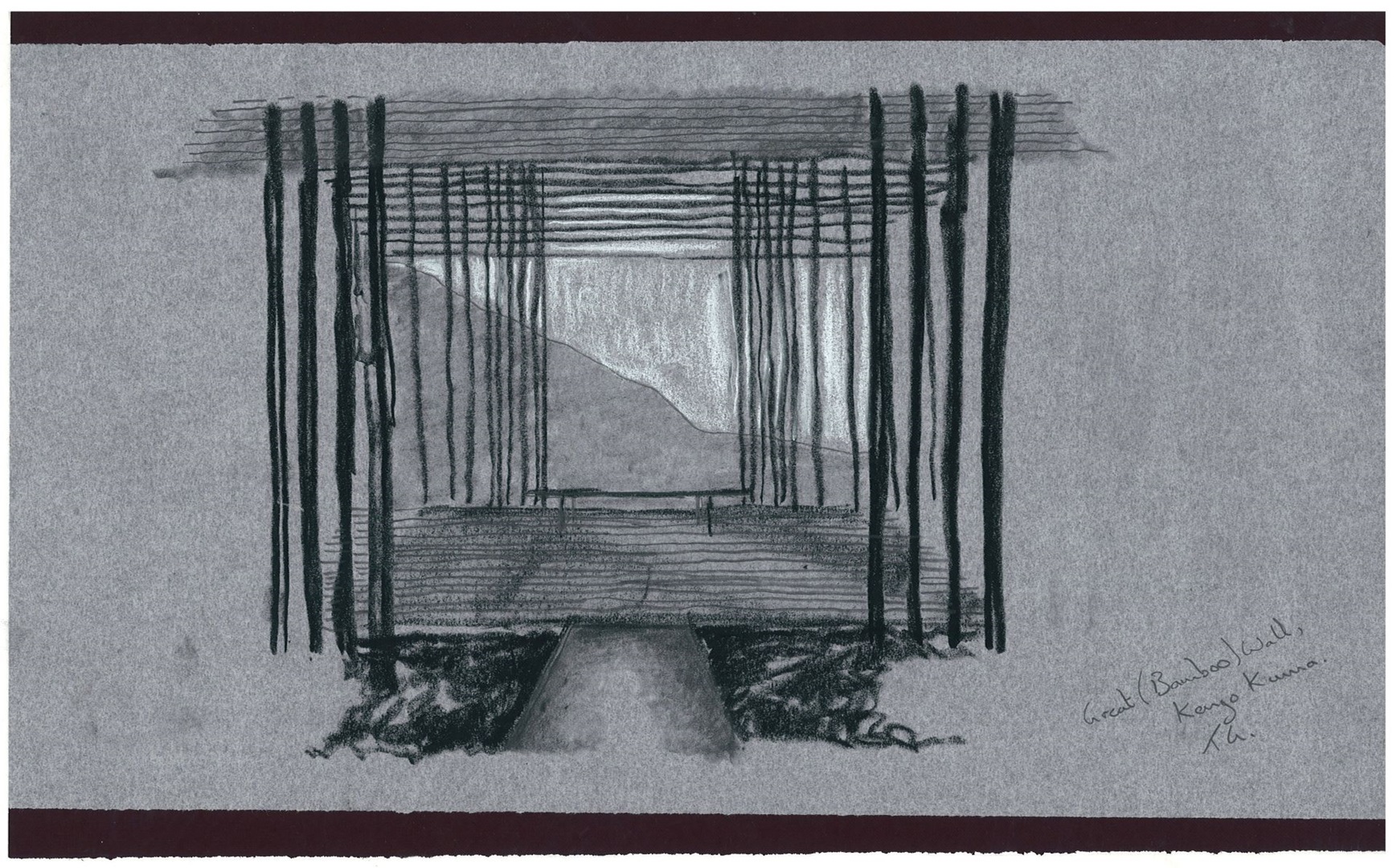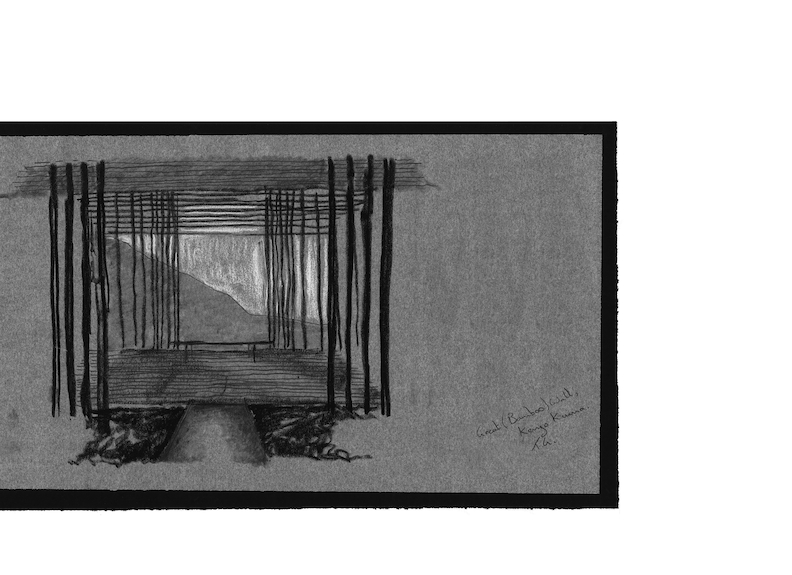
Portfolio
An unconfined space for art, design and architecture


Tom Gibson talks about Kengo Kuma
Light and air filter gently in, connecting the bamboo space to the surrounding trees. Built around a timber frame, the structural properties of bamboo have been manipulated here to create delicate walls that offer shelter and regulate both levels of light and privacy. This is in China, right by the Great Wall, and it is the creation of Japanese architect Kengo Kuma.

The space, and the private villa to which it is attached, exude highly finished natural luxury, a far cry from the shiny tall buildings, inspired by Western design, which are springing up all over China. Instead, the structure recalls traditional Japanese temples (like the Shinto shrine in the city of Ise) built out of timber to work in sympathy with the elements. The villa’s proximity to the Great Wall creates an immediate contrast between the bamboo (which is sourced locally) and the ancient masonry of the Wall; and suggests a symbolic connection between the two countries.
The dual nature of the work, bringing inside and outside together, and the process of craft and experimentation behind it, are the hallmarks of Kengo Kuma, whose work places great value on pushing the limits of human-friendly and sustainable materials. Material exploration is seen as a cornerstone of traditional Japanese architecture, and this culture of making forms the starting point for any Kengo Kuma project.
Kuma’s architectural office in the Minamiaoyama district of Tokyo is filled with full-scale prototypes testing concrete set with fibre optics, plastic walls filled with insulating water, and numerous complex timber lattices, underscoring the practice’s reliance on model-making and craft.
He has now turned his attention to Europe, opening a second office in Paris in 2008, and winning commissions for a concert hall in Besançon in France and a performing arts centre in Grenada in Spain. The urban scale of these projects will test the European practice with both a complex set of requirements and multi-disciplinary client bodies. If budgets – and everyone’s nerves – hold, Europe can sit back and wait to enjoy Kengo Kuma’s wonderfully clear architecture, imbued with technical innovation, enduring methods of construction and a deep level of material understanding.
Tom Gibson is completing an MA in architectural design at the Royal College of Art in London. The image is his sketch for RE.
© Norton Rose Fulbright LLP 2025